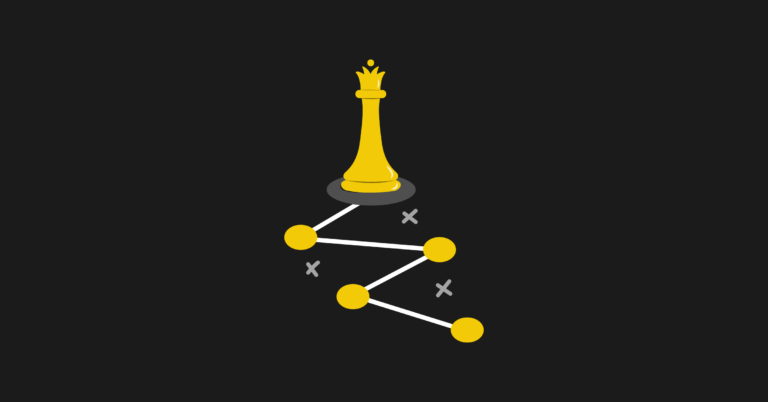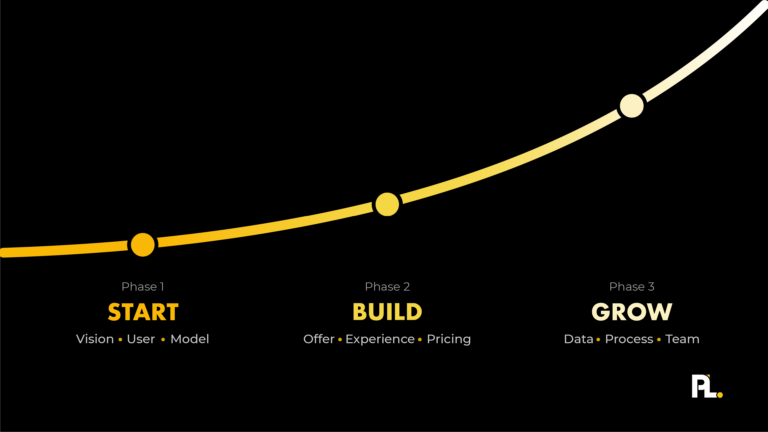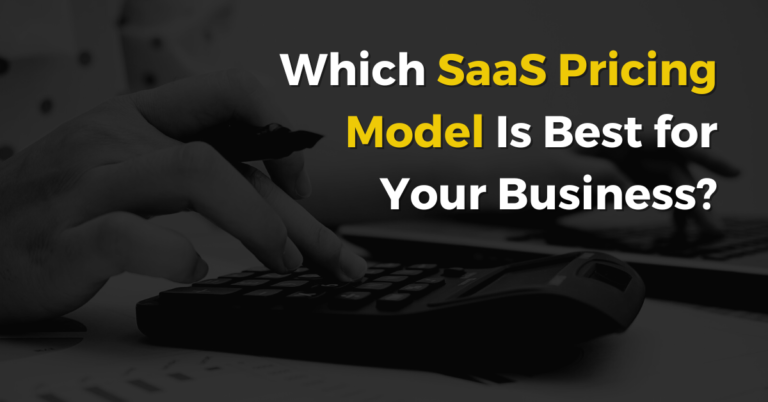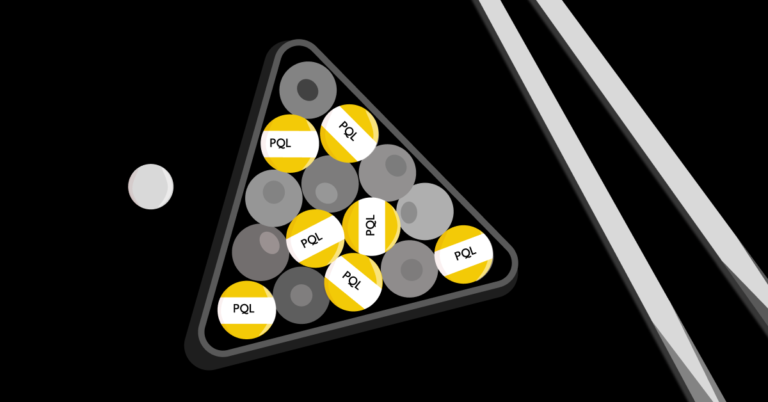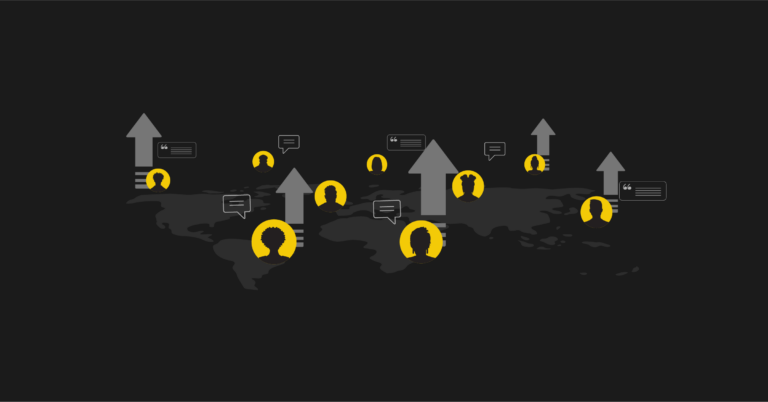Retention often doesn’t get talked about as much as user acquisition in SaaS. Yet your customer retention metrics can make or break a business.
This article looks at the core customer retention you’ll want to monitor, along with how to measure and improve them.
You’ll learn:
- What retention means and how to define it
- Essential retention metrics you should be measuring (it's not the same for everyone)
- How to build a retention curve
- Key factors that impact retention and how to improve them
Ready? Let’s go.
What Are Customer Retention Metrics?
Retention is a measurement of how long your customers stick around and actively engage with your product or business.
Customer retention metrics, such as churn and time to value, are units of measure that help SaaS companies monitor the performance of their products over a specific time period.
It can take a lot of different formats and there are a lot of different flavors of retention based on your industry and your company type, but it's about having a base of users that experience value through your product. Because of that, they stick around for some period of time.
How to Measure Customer Retention Metrics in SaaS
Customer retention metrics are essential for SaaS companies to monitor the performance of their products and ensure long-term success. These metrics provide valuable insights into how well your customers stick around and actively engage with your product or business.
By measuring customer retention, you can identify areas for improvement and take proactive steps to increase customer loyalty and satisfaction.
To measure customer retention metrics effectively, you can use various time periods depending on your specific needs. For example, you might choose to measure retention on a monthly, quarterly, or annual basis. By analyzing retention over different time periods, you can gain a comprehensive understanding of customer behavior and make data-driven decisions to improve retention rates.
In addition to these metrics, it's important to consider your product engagement score (PES).
PES is a measure of how engaged your customers are with your product and can be a strong indicator of customer retention. By tracking and increasing your PES, you can drive higher customer satisfaction and loyalty.
Types of Customer Retention You Should Measure
The key customer retention metrics that product-led companies measure are not the same.
Retention can be looked at from two primary lenses:
- Core Retention
- Proxy retention
Let’s briefly look at each of them.
Core Retention
The core retention metric is the total number of users who are still active after a certain period of time.
If you acquired certain users three months ago, what percentage of them are still around in Month Three?
With the core customer retention metric, users gain value from a product at a given time. At some point, you have a clear indication of whether or not that user is going to stick around. I.e. if the user stays after a certain length of time, they’re probably going to stay long-term.
Proxy Retention
Proxy retention metrics are action-based metrics. They are the core actions users need to take to support your model.
If you're an enterprise SaaS product selling an email platform that does outbound sales better than anybody else, your proxy metric is the actual daily usage of that product.
A great example is Netflix, the world's biggest subscription model. The underlying mechanics of how they understand the quality of users that are coming into their funnel and whether or not those users are going to stick around is a proxy metric.
For Netflix, that’s 18 or 19 hours of content consumed per month, per user. If a user consumes that much content in a Netflix model, it's highly likely they're not going to churn out.
The proxy metric is a proxy because it's not pure retention, but rather an action that should lead to retention down the road. By looking at how users are behaving today, you can make accurate predictions on how they're going to behave tomorrow, in a week, and in three months.
Customer Retention KPI and Key Metrics
Measuring customer retention is crucial for the success of any product-led company. By tracking the right metrics, you can gain insights into the effectiveness of your retention strategies and make data-driven decisions to improve customer retention.
Here are some examples of key metrics to consider for your customer retention key performance indicator (KPI) SaaS dashboard:
1. Customer Retention Rate (CRR)
The customer retention rate measures the percentage of customers who continue to use your product over a specific period. It helps you understand how well you are retaining your existing customers and the overall health of your customer base.
2. Customer Churn Rate
The customer churn rate is the percentage of customers who stop using your product within a given time frame. It is the opposite of customer retention and indicates the rate at which you are losing customers. Monitoring this metric allows you to identify potential issues and take proactive measures to reduce churn.
3. User Lifetime Value (LTV)
Customer lifetime value is the total revenue a customer generates throughout their relationship with your company. It helps you understand the long-term value of your customers and guides your decision-making when it comes to customer acquisition and retention strategies.
4. Net Promoter Score (NPS)
Net Promoter Score is a measure of customer loyalty and satisfaction. It asks customers to rate their likelihood of recommending your product to others on a scale of 0 to 10. NPS provides valuable insights into customer sentiment and can help you identify areas for improvement to increase customer retention.
5. Customer Satisfaction Score (CSAT)
Customer Satisfaction Score measures how satisfied your customers are with your product or service. It typically involves asking customers to rate their satisfaction on a scale. Monitoring CSAT helps you gauge customer happiness and identify areas where you can enhance the customer experience to improve retention.
6. Customer Effort Score (CES)
Customer Effort Score measures the ease of doing business with your company. It assesses how much effort customers have to put in to achieve their desired outcomes. By reducing customer effort, you can enhance the overall customer experience and increase retention.
7. Time to Value (TTV)
Time to value is another critical factor in increasing product engagement and retention. It refers to the amount of time it takes for users to realize the value of your product. The quicker users can experience the benefits and achieve their desired outcomes, the more likely they are to engage with your product and continue using it.
By tracking these key metrics, you can gain a comprehensive understanding of your customer retention performance and take proactive steps to improve it. Remember, customer retention is a continuous process, and regularly monitoring these metrics will help you stay on top of your retention goals.
It can take a lot of different formats and there are a lot of different flavors of retention based on your industry and your company type, but it's about having a base of users that experience value through your product. Because of that, they stick around for some period of time.
Why Product-Market Fit Is Vital for Retention
Along with proxy and core metrics, you’ll want to ensure you have a product-market fit, which gives you a sense of how market-ready your product is. It’s a measure of your revenue against the payback period.
It shows the percentage of users who find value in your product over a period of time.
When you've got product-market fit, you can:
- Scale your company
- Be comfortable spending money on growth
- Have confidence in your financial modeling
- Have confidence in your retention models
Next, you’ll want to measure these metrics with cohorts.
How to Develop Measurable Cohorts for Retention
A cohort is a group of users who experience the product value more or less at the same time.
To do this, look at users for one month.
The starting month is referred to as Month Zero. If a hundred people experience the product in Month Zero, that's your cohort. The idea is to track the behavior of each key retention metric–core and proxy–for that specific cohort of users.
As a product manager or CEO, you can look at the data per cohort to see which core metrics have improved over time. As you start measuring different cohorts, you can find the value within your product that attracts and keeps users around.
Customer Retention Curves and How to Build One
A customer retention curve provides a visual representation that shows the average retention of SaaS users for a specific length of time.
Let's look at some activation curve examples.
The chart below illustrates an activation curve based on cohort data for an arbitrary product. It shows the number of users activated over an interval of time.
In this example, users sign up in the month of January. Over the next six to seven months, the number of users activated decreases substantially. Almost none of them are left by the end of the time period.
Users fall off doing the core action quickly and the curve never flattens – users just go away.
This is an example of bad product-market fit and really bad retention. A lot of early-stage companies are actually here. They’ve figured out how to get customers in, but they haven’t nailed the mechanics to keep them around.
As discussed earlier, you want to see these metrics improve over time.
If we look at the arbitrary product, the curve starts to flatten a bit by March. This indicates users are receiving value out of the product month-over-month. This is when you generally have the concept of product-market fit.
This is likely when you can actually hit the gas a little bit.
How to Build Your Own Retention Metrics
Now we’re going to look at how you can implement these metrics at your company.
First, Have Measurement Tools in Place.
To build your retention metrics, you need to have enough tooling in place to track signups on a cohort basis.
Use sophisticated tools such as Google Analytics, Google Analytics 360, Segment, Mixpanel, or Amplitude – they generate these types of reports for you. But you can also stick to the basics and a database to manually export the data, and then plug the numbers into a spreadsheet.
Then, Know Your Proxy Metric.
It’s important to know what to track and measure.
As an owner-operator or product person, you really need to understand what you’re monitoring in each cohort. You need to gather the raw user and signup data. Then you also have to understand what that proxy metric is: what action is the user performing? Is it consuming content? A download? A daily active or weekly active user?
Most likely, your proxy metric is going to be very similar to your North Star metric.
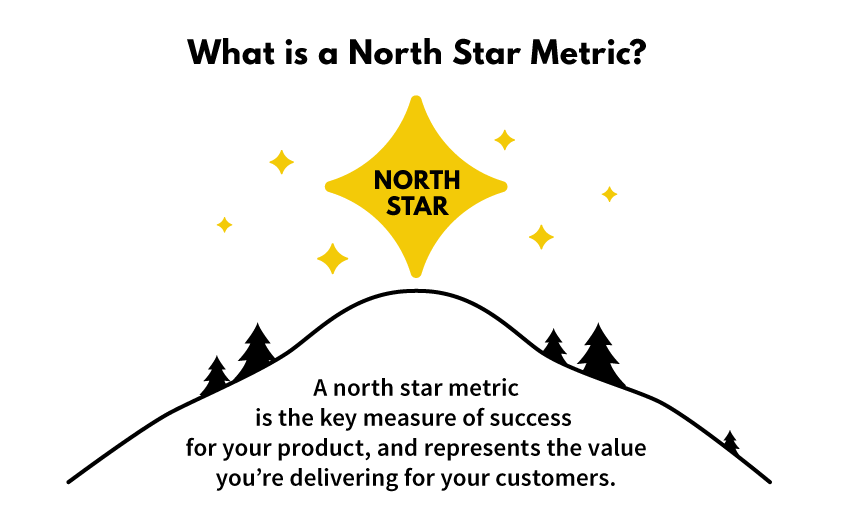
Your North Star metric is the ultimate goal-based, single metric to own them all. For example, this may be monthly active subscribers.
4 Key Factors That Impact Retention Success
So many different elements can impact retention, making it a difficult task. The first step is nailing down your proxy and core metrics.
There are four main ways you can effectively impact retention, with the first two being the most likely to produce the greatest results:
- Focus on new users
- Target better users
- Kill features that don’t provide enough core value
- Change your model (or your pricing)
Let’s explore each of these.
1. Focus on New Users
The easiest way to improve retention is to focus on early customers and the initial experiences they have with the product. This is important is because once users have experienced your product, it is very hard to change their perception of it.
Here are some tactics you can use to create a great first impression:
- Run a bunch of experiments on user onboarding to test various methods.
- Include personalization in your sales process.
- Build better hooks into your products so users experience value faster.
- Incorporate feedback loops with your customers as fast as possible.
2. Target Better Users
Not every user will be the ideal customer, and not all channels are created equally.
When it comes to targeting better users, it's less about the actual channel itself and more about looking at that channel as a cohort and understanding how those specific users are performing.
For example, let’s say you are targeting users through paid acquisition using Google and Facebook. While users are going to come in through those channels, there’s also going to be a bunch that arrives via organic channels.
Instead of looking at retention and even activation as a blended set of users, you need to take each of these targets, split them out into their own little mini-cohorts, and measure those over time.
What you're likely to find is some channels work a lot more effectively to attract your ideal customers. As a result, double down and scale those channels.
3. Kill Features That Don’t Provide Enough Core Value
Overbuilding is probably the number one issue that startups experience universally across the board, regardless of industry. Product managers, engineers, designers, UX people, researchers, and strategists – all want to build stuff that makes us feel really good.
In an ideal world, the build does add value to the product. But the reality is that a lot of what we build doesn't connect enough value to a large enough percentage of people to justify the time spent on the build. You need to understand where the real value is coming from. That’s where you look at both qualitative and quantitative data.
You need to look at how a rollout or a build is impacting retention metrics and kill features that don’t add any value.
While you're not going to know what features should be killed for a while (think six months to a year), you will be able to track your proxy metrics against those feature builds.
How do you do this?
Run Firebase experiments. Split test. Build feature flags in your product based on how key metrics are being impacted.
But remember, the product management process is always evolving.
4. Change Your Model (or Your Pricing)
In the early days, you can change your pricing and be okay. But now it’s more and more difficult since you’re charging users on a monthly basis.
At Sandbox, we never had the intention of building a subscription business. But the opportunity came about when we realized users would transactionally buy over and over again for a relatively short period of time.
They trust us, and they value what we're putting out. As a result, we extended the lifetime of the customer by adding more features they could purchase. After three months, users stuck around.
So we thought about it differently. What if you get X number of units of value for Y amount of a cost?
And it actually worked.
We haven’t transitioned 100 percent to this model yet, but we’re close. We did this because we saw the opportunity there…we could potentially increase the lifetime value of our customers by making a subscription offer.
5 Strategies to Increase User Retention
Customer retention marketing is a strategy focused on maintaining strong connections with existing customers and increasing their retention. Let's break down five strategies to achieve effective retention marketing below.
1. Segmenting the Customer Base
Dividing customers into distinct segments based on factors like usage patterns, user types, or subscription plans allows businesses to tailor marketing efforts to specific groups. This personalized approach enhances customer engagement and boosts retention.
2. Delivering Relevant Emails
Email marketing provides an avenue for engaging customers with targeted messages. By sending newsletters, transactional emails, or promotions tailored to the interests and preferences of specific customer segments, businesses can increase customer retention. Utilizing templates, dynamic content, and analytics ensures the creation of effective email campaigns.
3. Creating Engaging Content
Offering diverse content forms such as how-to YouTube videos, blogs, guides, and webinars enables businesses to showcase their product's value and engage customers. It's essential for the content to be informative, relevant, and aligned with the brand's personality. Webinars and training videos are particularly effective in educating customers and nurturing relationships.
4. Optimizing the Onboarding Process
Onboarding plays a crucial role in establishing positive first impressions and ensuring customers understand and derive value from the product. By delivering a seamless and value-driven onboarding experience, businesses can improve customer retention and generate positive feedback.
5. Leveraging In-App Messaging
Sustained engagement with existing customers is key to retention. In-app messaging allows businesses to communicate with customers at appropriate times, celebrate milestones, offer assistance, and encourage the exploration of product features. This approach fosters customer loyalty and reduces the likelihood of switching to alternatives.
Implementing these retention marketing strategies empowers businesses to enhance customer satisfaction, cultivate loyalty, and ultimately achieve higher customer retention rates.
Keep Retention Top of Mind
If your retention curve doesn't continue to flatten and just slowly falls to the floor, it most likely points to a value problem.
If you talk to customers after they’ve churned and ask why they're churning after a certain amount of time, they'll likely give some tough love. You might find your pricing or model is a reason, but it's likely not the only reason.
Take the time to think about retention as a company with your main stakeholders. It’s as important as gaining new customers. Understand your core and proxy metrics. Be mindful of the ways that you can actually impact retention. Read up on it. Make it a part of your daily habit as somebody interested in product management and growth to own it.
Looking To Scale Your Self-Serve Revenue, Faster? Join ProductLed Academy.
We all need a helping hand in this lonely world of business.
We've coached and mentored thousands of SaaS business owners, just like you, helping them overcome bottlenecks such as retention, and achieve resounding success through product-led growth.
ProductLed Academy is a 12-month coaching program, where you'll work directly with me (Wes Bush) to master each of the nine components of a successful product-led business (we spend around six weeks on each of these topics):
- Vision: What is your company really good at?
- User: Who do you serve best?
- Model: How do you create a ton of value for your users to win?
- Offer: Have you crafted an irresistible free offer for your ideal users?
- Experience: Have you created an effortless path to value for your users?
- Pricing: Is it easy for users to upgrade without talking to anyone?
- Data: Do you know where users are getting stuck in your product?
- Process: Do you have a growth process that enables your team to build out experiments, prioritize the high-impact ones, and launch the ones that are easiest?
- Team: Is your team full of A players capable of taking you to the next level?
While you can have one or more of these dialed in perfectly, if you’re missing one of these key players, you’re going to have a hard time with growth.
Apart from focusing on those key areas of your strategy, ProductLed Academy comes with:
- Weekly 60-minute group coaching call with Wes Bush, where you'll go through each of the components of the ProductLed Method (including pricing) to master a self-serve model.
- Weekly non-negotiable tasks to keep you accountable.
- Access to an exclusive ProductLed Founder Community so you can meet other ambitious founders and receive support 24/7.
- Access to the ProductLed Vault, where you'll gain access to all of our programs (including ProductLed Acquisition and Accelerator), templates, and frameworks.
If you're ready to break through to the next level and master product-led growth, be sure to check out ProductLed Academy.


